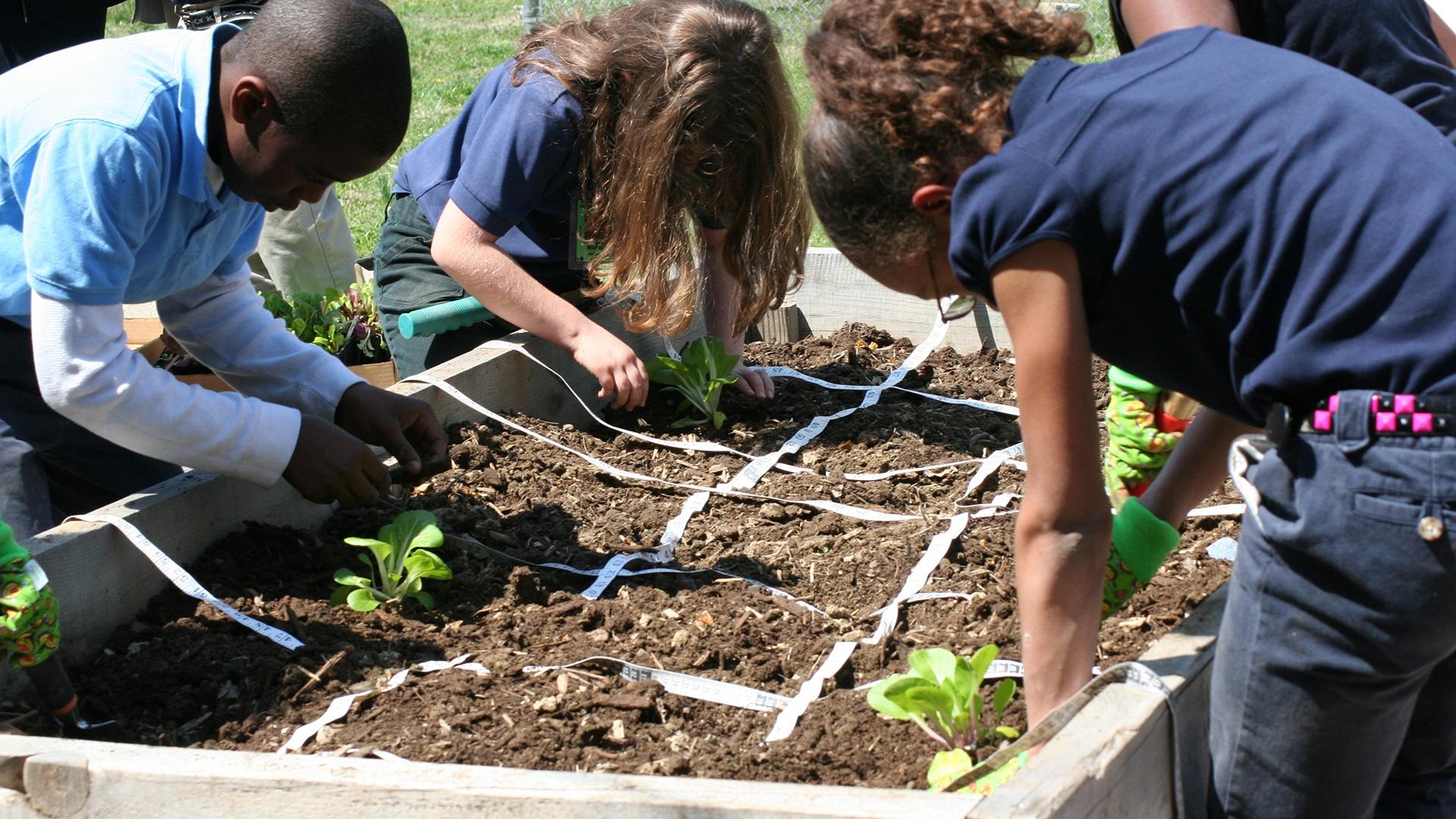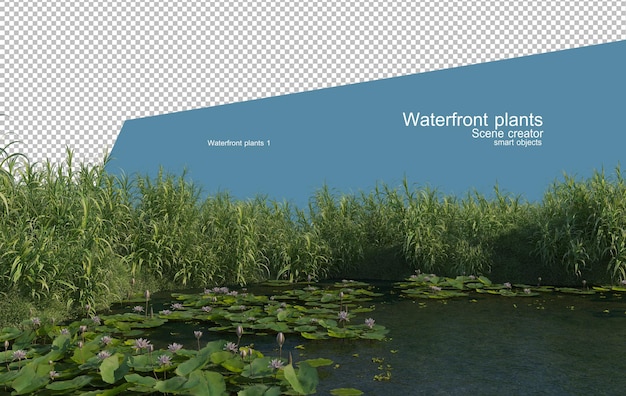The world around us is changing, and with it, our understanding of how we interact with nature. The concept of sustainability, once a niche topic, has exploded into the mainstream, touching nearly every facet of our lives. One of the most critical areas where sustainability is taking root is in the realm of landscaping. But it’s not just about planting a few trees or using eco-friendly fertilizers. It’s about a fundamental shift in how we design, build, and maintain the green spaces that surround us. This is where sustainable landscape education programs come into play.
These programs are no longer just an option; they are becoming a necessity. They equip individuals with the knowledge, skills, and values needed to create landscapes that are not only beautiful but also environmentally responsible, economically viable, and socially equitable. This article delves into the heart of sustainable landscape education, exploring the various programs available, the benefits they offer, and the vital role they play in shaping a greener future. We’ll explore the core principles, the different program types, the career paths they open, and how you can get involved in this exciting and essential field.
The Core Principles of Sustainable Landscaping
Before we dive into the specifics of education programs, it’s important to understand the underlying principles that guide sustainable landscaping practices. These principles are the foundation upon which all sustainable landscape designs are built.
- Conservation of Resources: This is perhaps the most fundamental principle. It involves minimizing the use of water, energy, and other resources. This can be achieved through practices like water-efficient irrigation systems, using native plants that require less water, and utilizing renewable energy sources.
- Minimizing Waste: Sustainable landscapes aim to reduce waste in all forms. This includes composting yard waste, using recycled materials, and reducing the need for chemical fertilizers and pesticides.
- Protecting and Enhancing Biodiversity: Sustainable landscapes strive to create habitats that support a wide variety of plants and animals. This involves selecting native plants, providing food and shelter for wildlife, and avoiding practices that harm the environment.
- Soil Health: Healthy soil is the foundation of a healthy landscape. Sustainable practices focus on improving soil quality through composting, mulching, and avoiding the use of harmful chemicals.
- Human Health and Well-being: Sustainable landscapes consider the impact on human health and well-being. This includes designing spaces that are safe, accessible, and promote physical and mental health. It also encompasses the responsible use of chemicals and the avoidance of practices that could harm human health.
- Economic Viability: Sustainable landscapes should be economically sustainable. This means considering the long-term costs and benefits of landscape choices, such as reducing water bills, minimizing maintenance, and increasing property values.
Types of Sustainable Landscape Education Programs
The good news is that there are numerous pathways to gain the knowledge and skills needed to practice sustainable landscaping. The type of program you choose will depend on your existing experience, your career goals, and the level of commitment you’re able to make. Here are some of the most common types of programs:
Certificate Programs
Certificate programs are typically short-term, focused on specific skills or areas of knowledge. They are an excellent option for individuals looking to quickly gain practical skills and a credential to enhance their resume. These programs often cover topics such as:
- Sustainable landscape design principles
- Water-efficient irrigation techniques
- Native plant selection
- Composting and organic gardening
- Sustainable lawn care
Certificate programs can be found at community colleges, vocational schools, and through professional organizations. They are often completed in a matter of weeks or months, making them a good choice for those seeking a quick entry into the field or a way to supplement existing knowledge.
Associate’s Degrees
Associate’s degrees provide a more in-depth education, typically taking two years to complete. They offer a broader understanding of landscape design, horticulture, and related subjects. An associate’s degree can serve as a stepping stone to a bachelor’s degree or can prepare graduates for entry-level positions in the landscape industry. Curriculum often includes:
- Landscape design and drafting
- Plant identification and selection
- Soil science
- Irrigation system design and installation
- Landscape construction
- Business and management principles
Bachelor’s Degrees
A bachelor’s degree in landscape architecture or a related field offers the most comprehensive education. These programs typically take four years to complete and provide a strong foundation in design, technical skills, and environmental principles. Graduates with a bachelor’s degree are often eligible for professional licensure and are well-prepared for a wide range of career opportunities. The curriculum typically encompasses:
- Advanced landscape design and planning
- Site analysis and grading
- Construction documentation
- Environmental sustainability
- Landscape ecology
- Professional ethics and business practices
Master’s Degrees
Master’s degrees are for individuals seeking advanced knowledge and specialization in a particular area of sustainable landscape design. These programs typically build upon the foundation of a bachelor’s degree and involve in-depth research and design projects. Master’s degrees can lead to leadership roles in the field, as well as opportunities in research and education. Specializations may include:
- Sustainable design
- Urban ecology
- Landscape restoration
- Environmental planning
Continuing Education and Workshops
Even after completing a formal degree or certificate program, it’s important to stay up-to-date with the latest trends and technologies in sustainable landscaping. Continuing education courses and workshops offer opportunities to learn new skills, network with other professionals, and earn professional development credits. These programs can cover a wide range of topics, from new plant varieties to innovative irrigation techniques to the latest design software.
Key Skills and Knowledge Gained in Sustainable Landscape Education
Regardless of the specific program you choose, sustainable landscape education will equip you with a diverse set of skills and knowledge. These skills are essential for creating and maintaining healthy, beautiful, and environmentally responsible landscapes. Here are some of the key areas you can expect to master:
- Plant Identification and Selection: Understanding the characteristics of different plant species, including their water requirements, sunlight needs, and suitability for specific climates and soil types. Learning to select native plants that thrive in the local environment and support biodiversity.
- Landscape Design Principles: Mastering the principles of design, including composition, balance, and harmony. Learning to create functional and aesthetically pleasing landscapes that meet the needs of the client and the environment.
- Water Management: Implementing water-efficient irrigation systems, such as drip irrigation and smart controllers. Understanding how to conserve water and minimize runoff.
- Soil Science: Understanding soil composition, soil health, and the importance of amending soil to improve its fertility and water-holding capacity. Learning to use composting and other organic practices to build healthy soil.
- Sustainable Construction Practices: Utilizing sustainable building materials, such as reclaimed wood and recycled concrete. Implementing construction techniques that minimize environmental impact.
- Pest and Disease Management: Identifying common pests and diseases and implementing integrated pest management (IPM) strategies that minimize the use of pesticides.
- Environmental Regulations and Best Practices: Understanding local and regional environmental regulations and best practices for sustainable landscaping.
- Project Management: Planning, organizing, and managing landscape projects, including budgeting, scheduling, and communication with clients and contractors.
Career Paths in Sustainable Landscaping
A sustainable landscape education can lead to a wide variety of exciting and rewarding career paths. The specific job titles and responsibilities will vary depending on your level of education, experience, and interests. Here are some examples:
- Landscape Architect: Landscape architects design outdoor spaces, including parks, gardens, and public spaces. They must be licensed in most states and typically have a bachelor’s or master’s degree in landscape architecture.
- Landscape Designer: Landscape designers create plans and specifications for landscape projects. They may work independently or for landscape architecture firms.
- Landscape Contractor: Landscape contractors build and maintain landscapes. They may specialize in installation, maintenance, or both.
- Horticulturist: Horticulturists are experts in the cultivation of plants. They may work in nurseries, botanical gardens, or landscape companies.
- Arborist: Arborists specialize in the care of trees. They prune, plant, and diagnose tree diseases.
- Irrigation Specialist: Irrigation specialists design, install, and maintain irrigation systems.
- Sustainability Consultant: Sustainability consultants advise clients on how to implement sustainable practices in their landscapes.
- Urban Planner: Urban planners are involved in the design and development of cities and towns. They may incorporate sustainable landscaping principles into their plans.
- Researcher/Educator: Individuals with advanced degrees may pursue careers in research or education, teaching sustainable landscaping principles at universities or colleges.
Choosing the Right Program for You
With so many different sustainable landscape education programs available, choosing the right one can feel overwhelming. Here are some factors to consider when making your decision:
- Your Goals: What do you hope to achieve with your education? Do you want to start your own business, work for a large firm, or simply improve your own yard?
- Your Experience: Do you have any prior experience in landscaping or a related field? This will help you determine the appropriate level of education.
- Your Time Commitment: How much time are you willing to dedicate to your education? Certificate programs require less time than associate’s or bachelor’s degrees.
- Your Budget: What can you afford to spend on tuition, fees, and other expenses? Consider the cost of different programs and look for financial aid opportunities.
- Program Accreditation: Look for programs that are accredited by a reputable organization. This will help ensure that the program meets high standards of quality.
- Curriculum: Review the program curriculum to see if it covers the topics that interest you and align with your career goals.
- Instructors: Research the instructors and their experience. Look for programs with experienced professionals who are passionate about sustainable landscaping.
- Location and Flexibility: Consider the location of the program and whether it offers flexible options, such as online courses or evening classes.
The Benefits of Sustainable Landscape Education
Investing in a sustainable landscape education offers a multitude of benefits, both for your career and for the environment. Here are some of the key advantages:
- Increased Job Opportunities: The demand for sustainable landscaping professionals is growing rapidly. As awareness of environmental issues increases, so does the need for professionals who can design, build, and maintain sustainable landscapes.
- Higher Earning Potential: Professionals with specialized knowledge and skills in sustainable landscaping often command higher salaries.
- Enhanced Skills and Knowledge: You’ll gain a comprehensive understanding of sustainable landscaping principles and practices, allowing you to create beautiful, functional, and environmentally responsible landscapes.
- Making a Positive Impact: By practicing sustainable landscaping, you can help conserve resources, protect biodiversity, and improve the health and well-being of people and the planet.
- Personal Satisfaction: Working in sustainable landscaping can be incredibly rewarding. You’ll have the opportunity to create beautiful and meaningful spaces that benefit both people and the environment.
- Networking Opportunities: Sustainable landscape education programs provide opportunities to connect with other professionals in the field, building valuable relationships and expanding your network.
- Staying Ahead of the Curve: By staying informed about the latest trends and technologies in sustainable landscaping, you can remain competitive in the job market and contribute to the advancement of the field.
Resources and Organizations
There are many resources available to help you learn more about sustainable landscaping and find education programs. Here are a few organizations and websites that you may find helpful:
- The American Society of Landscape Architects (ASLA): A professional organization for landscape architects that offers educational resources, networking opportunities, and professional development programs.
- The Association of Professional Landscape Designers (APLD): A professional organization for landscape designers that provides certification, continuing education, and networking opportunities.
- The Sustainable Sites Initiative (SITES): A program that provides guidelines and a rating system for sustainable landscapes.
- The U.S. Green Building Council (USGBC): A non-profit organization that promotes sustainable building practices, including landscape design.
- Local Universities and Community Colleges: Many universities and community colleges offer degree and certificate programs in landscape architecture, horticulture, and related fields.
- Local Extension Offices: Your local extension office can provide information on sustainable landscaping practices and connect you with local experts.
- Online Learning Platforms: Platforms like Coursera, edX, and Udemy offer a wide variety of courses and programs related to sustainable landscaping.
The Future of Sustainable Landscaping Education
The future of sustainable landscaping education is bright. As environmental concerns continue to grow, the demand for skilled professionals in this field will only increase. We can expect to see:
- More Specialized Programs: Programs will likely become more specialized, focusing on specific areas of sustainable landscaping, such as urban forestry, green infrastructure, or ecological restoration.
- Increased Emphasis on Technology: Technology will play a larger role in sustainable landscaping education, with programs incorporating the latest design software, irrigation technologies, and data analysis tools.
- Greater Integration of Online Learning: Online learning will continue to expand, providing greater flexibility and accessibility for students.
- Increased Collaboration: Collaboration between educational institutions, professional organizations, and industry leaders will become more common, leading to more relevant and practical training programs.
- Focus on Climate Change Resilience: Education programs will increasingly focus on designing landscapes that are resilient to the effects of climate change, such as drought, flooding, and extreme temperatures.
Sustainable landscape education is not just about learning how to design and maintain green spaces; it’s about contributing to a healthier planet. It’s about creating spaces that are beautiful, functional, and environmentally responsible. It’s about shaping a future where humans and nature can thrive together. By investing in a sustainable landscape education, you’re not just investing in your career; you’re investing in a better world.
So, whether you’re a seasoned professional looking to upskill, a career changer seeking a fulfilling new path, or simply someone passionate about making a difference, the world of sustainable landscaping education is waiting for you. Take the first step today, explore the programs available, and begin your journey towards a greener future. The earth, and all its inhabitants, will thank you for it.


